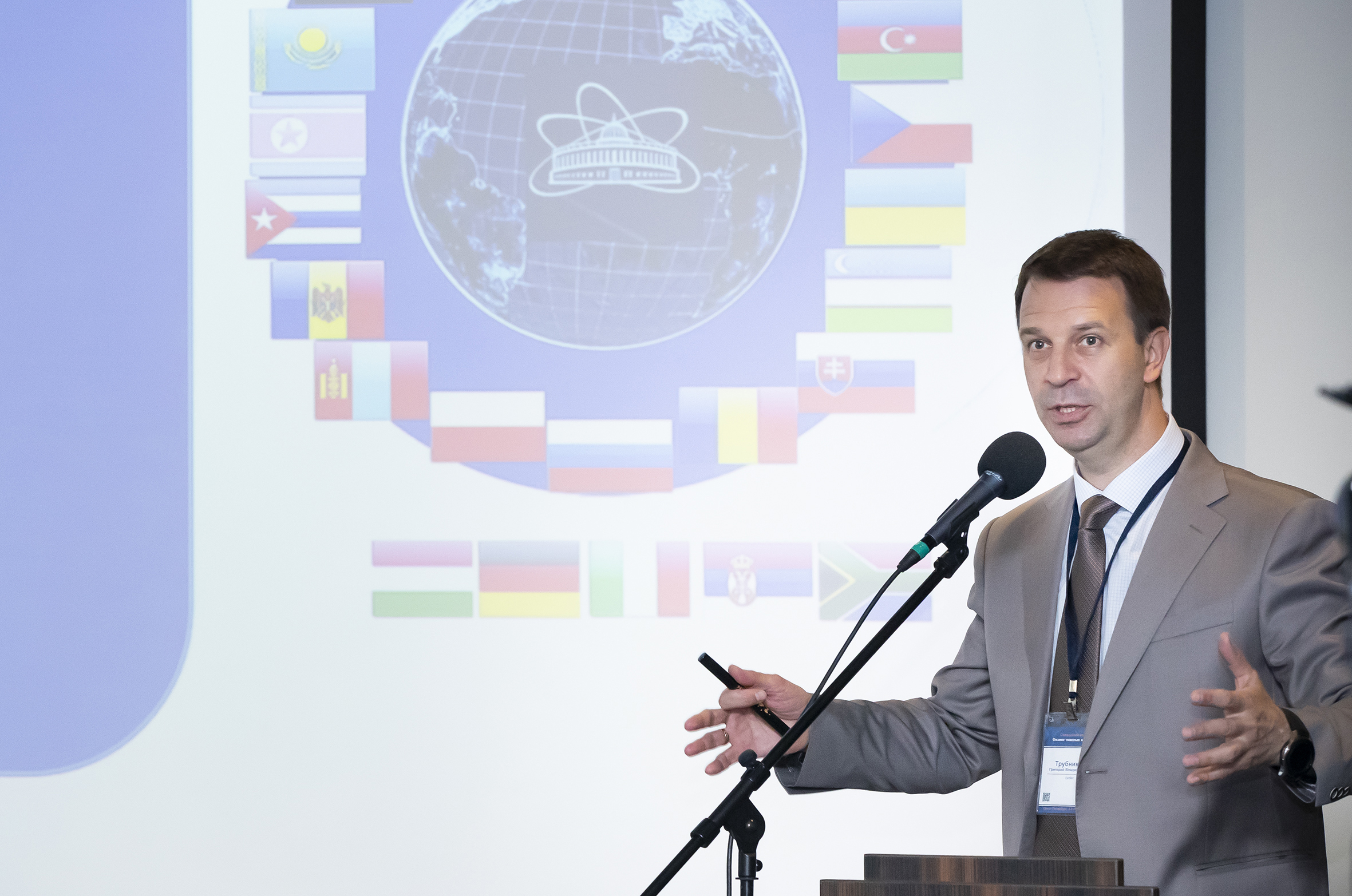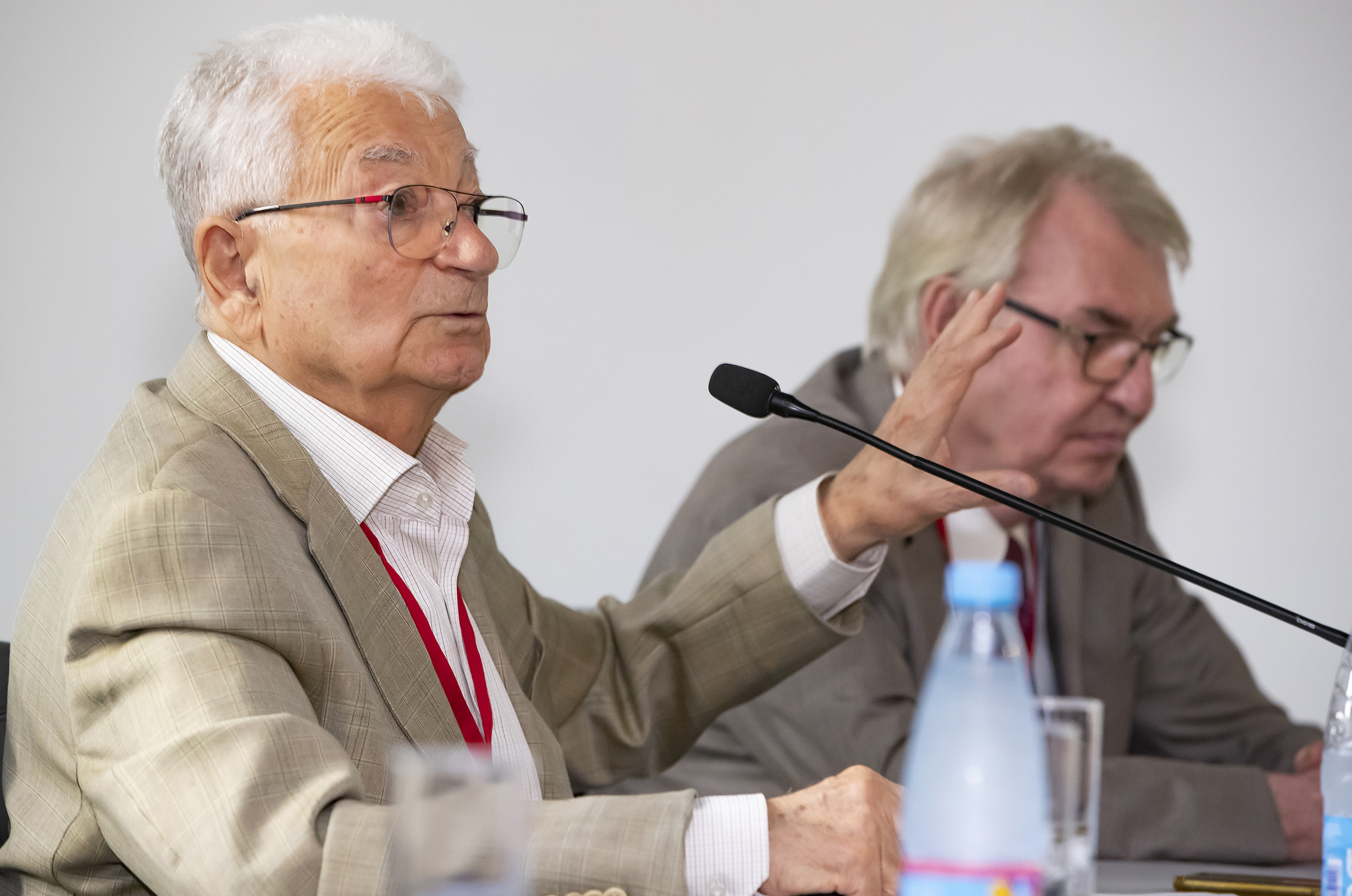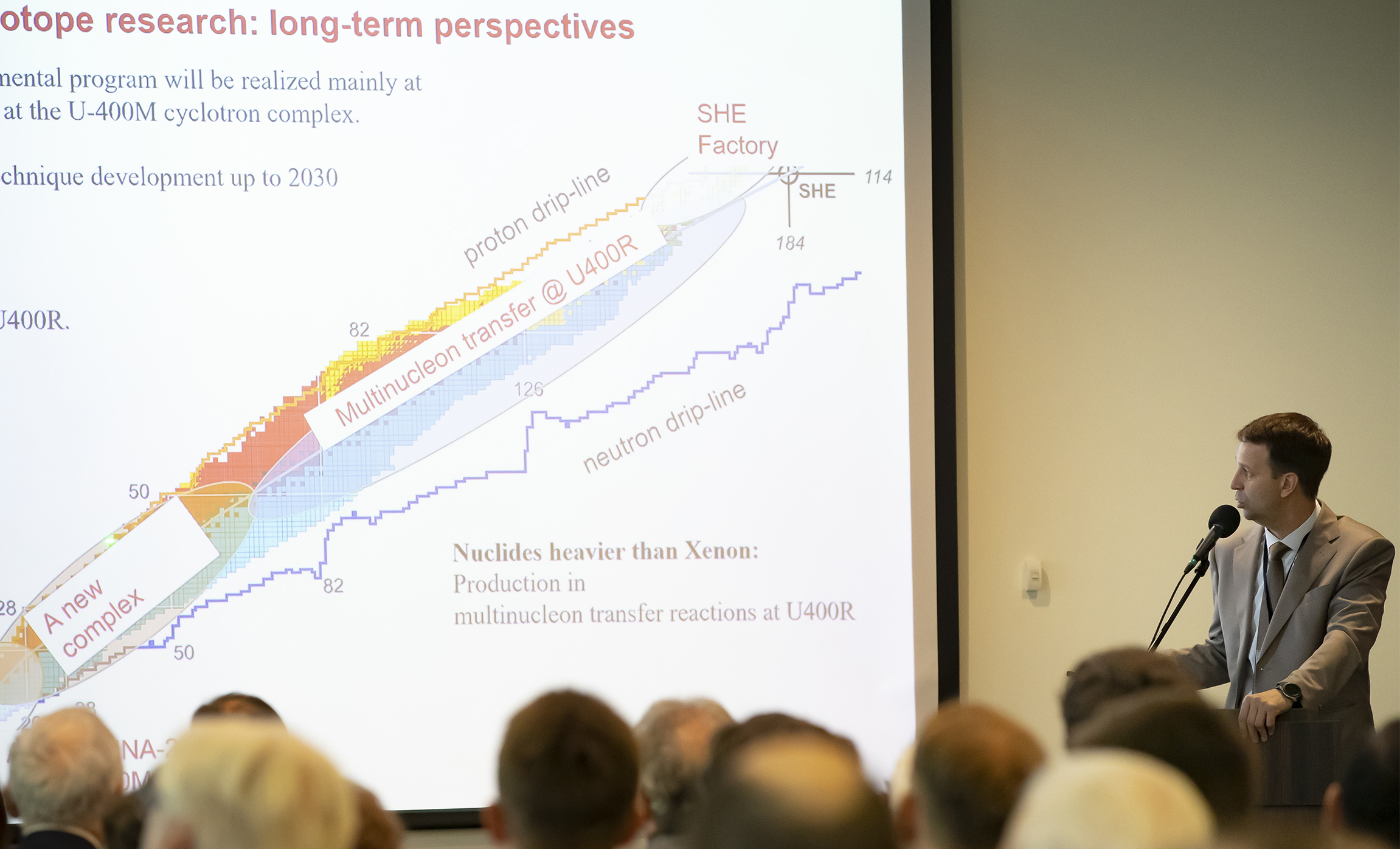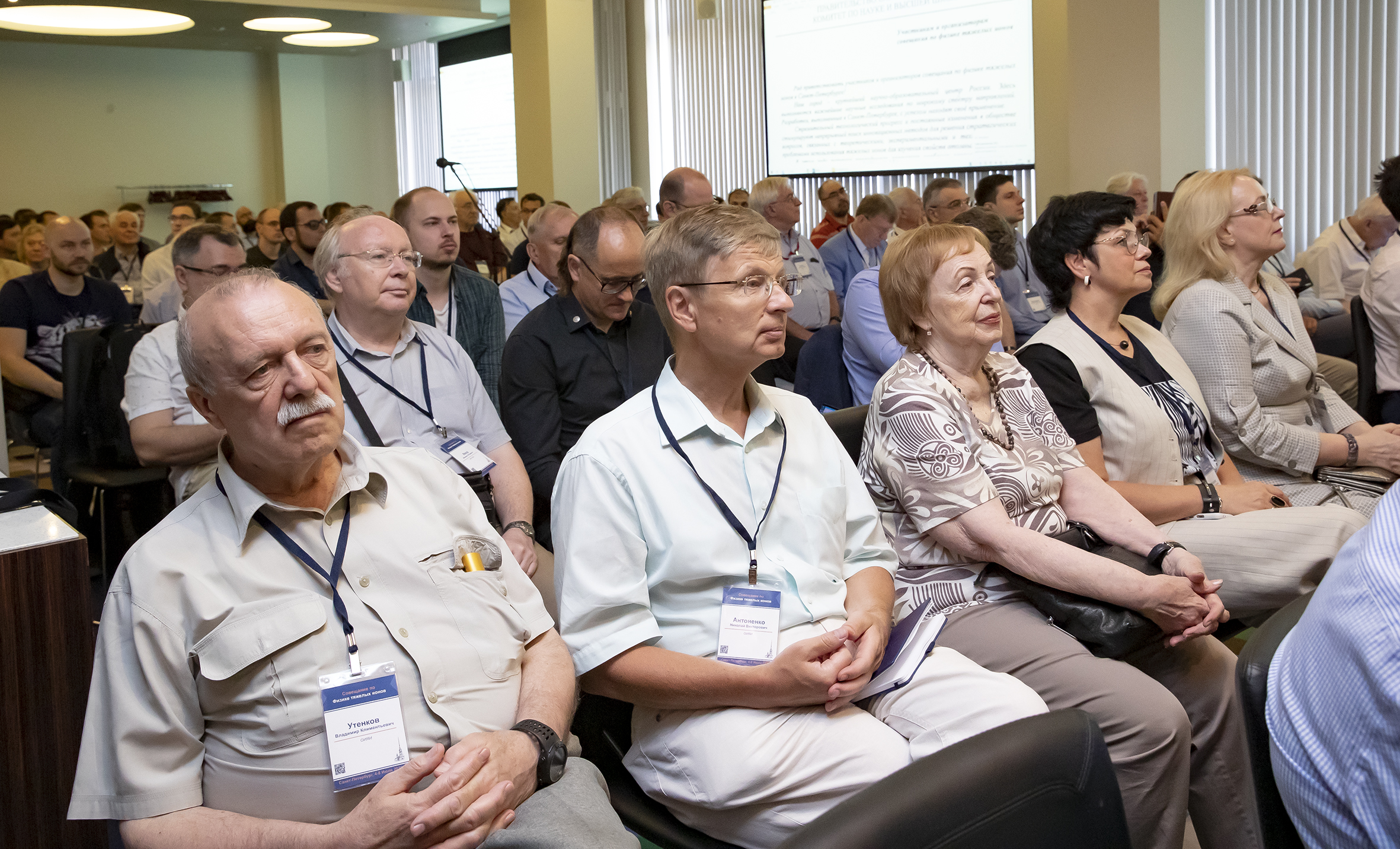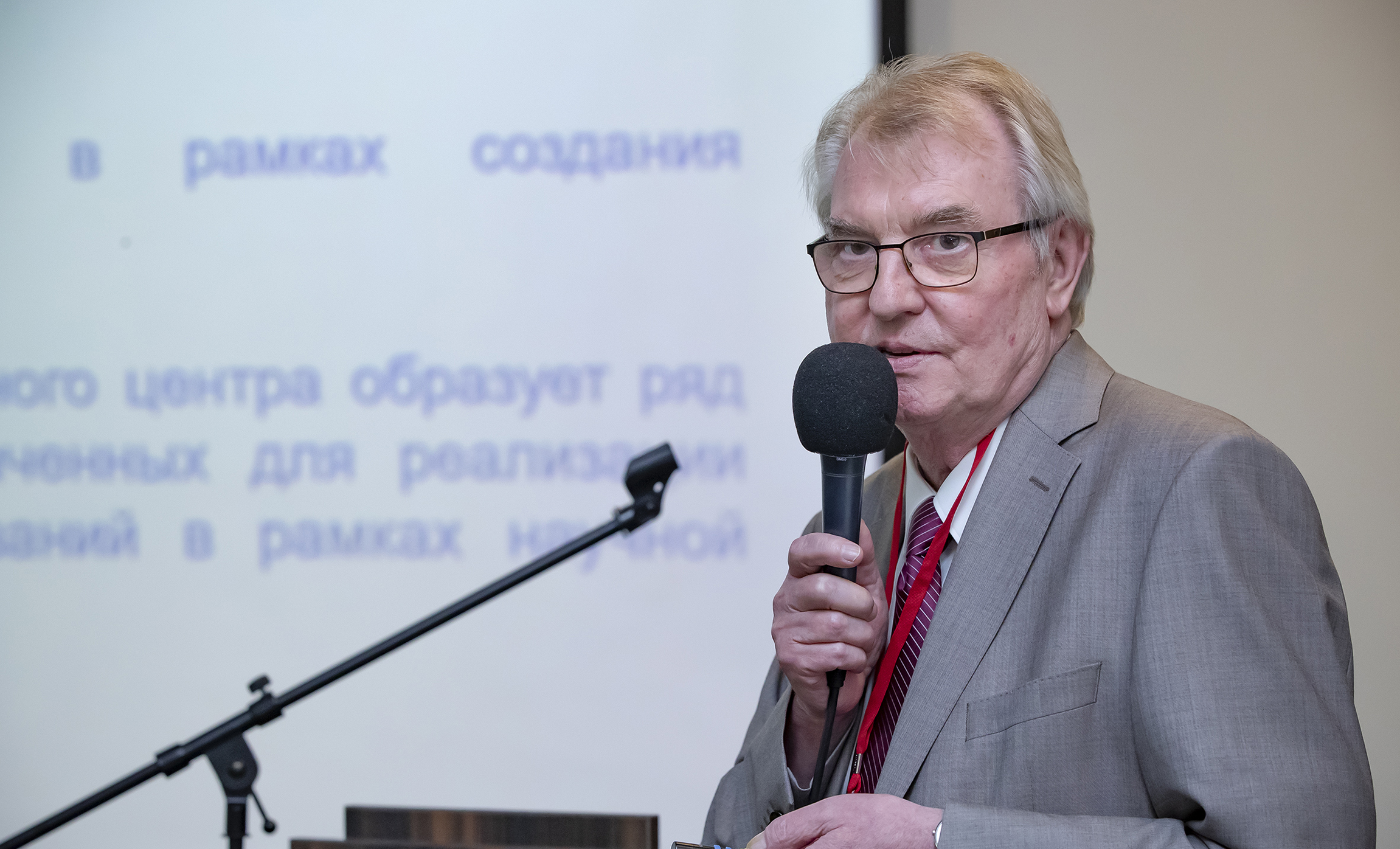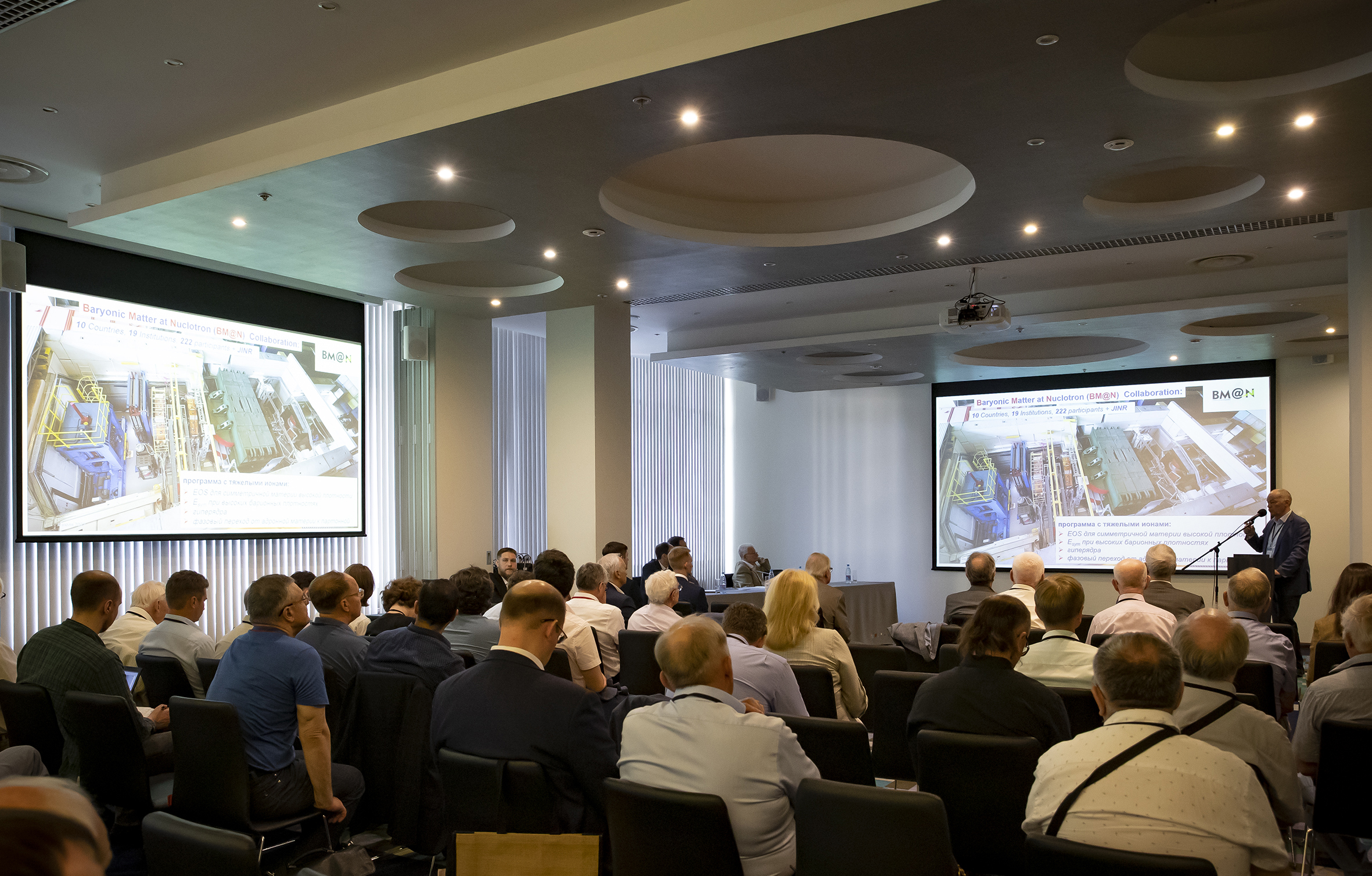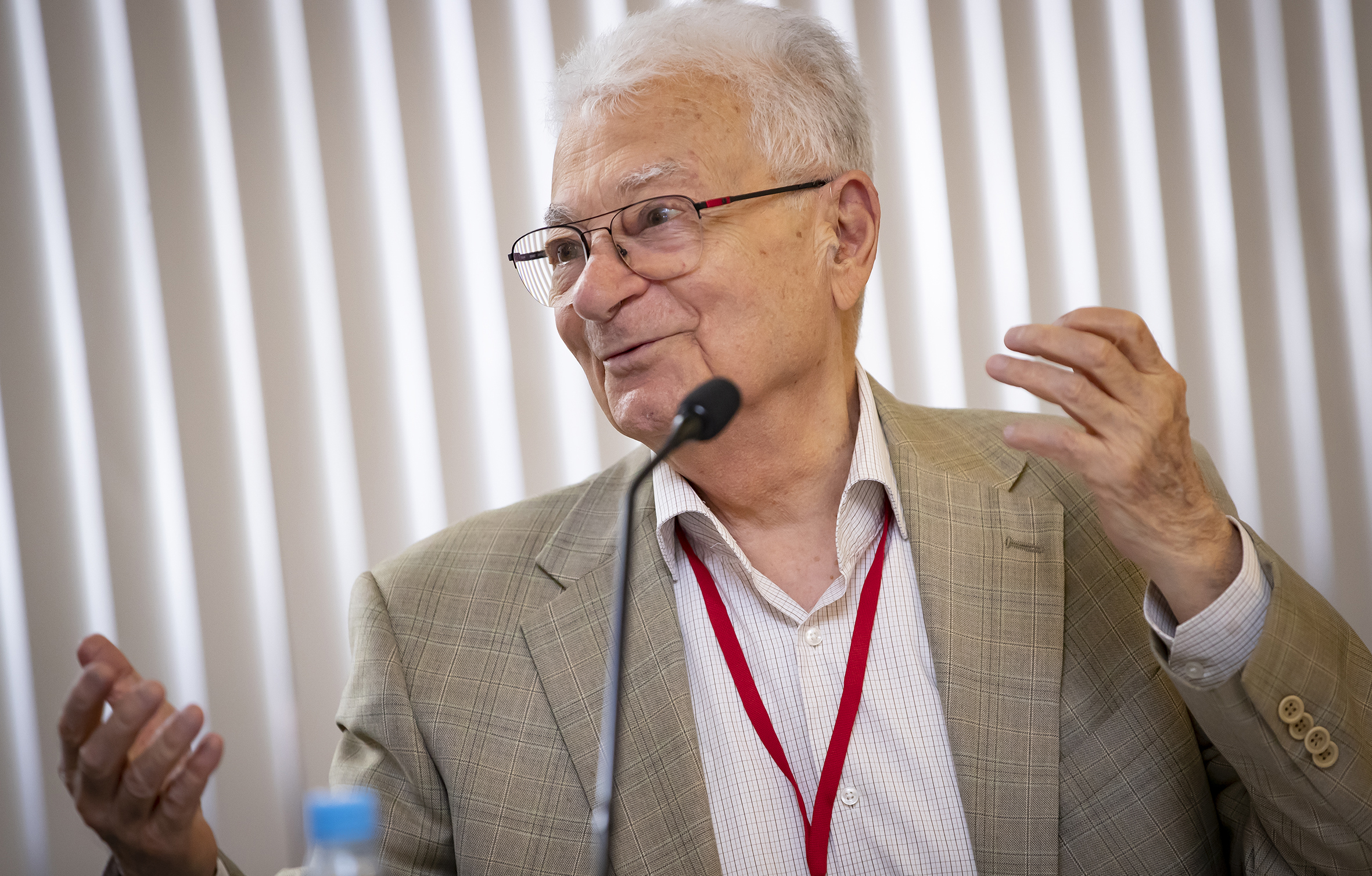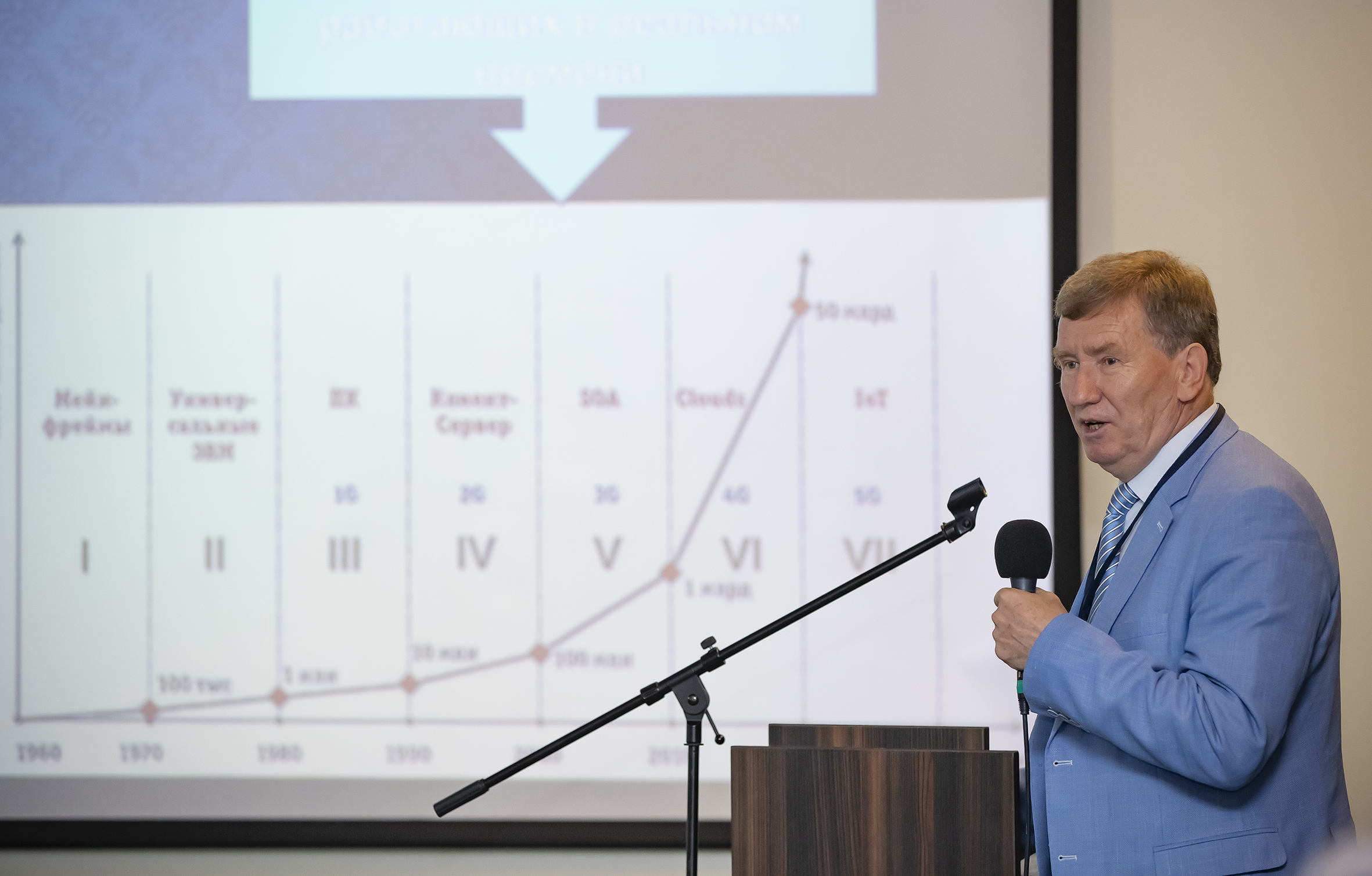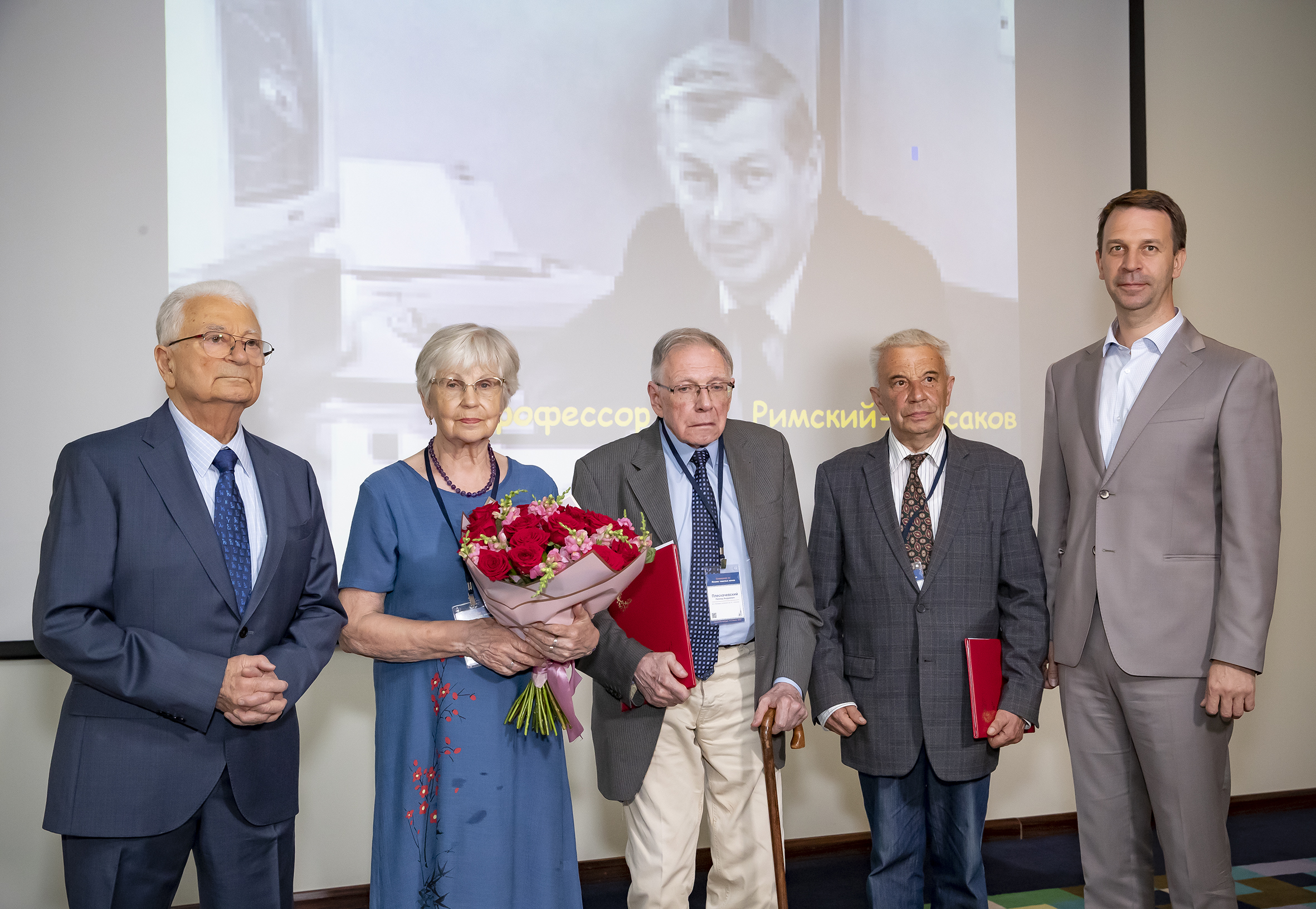Meeting of RAS Council on Heavy Ion Physics started
News, 05 July 2022
On 4 July, the RAS Council considered at the meeting in St. Petersburg a number of issues related to the development of the infrastructure and research in the fields of heavy ion physics. In particular, participants discussed provisional results of the fulfillment of the grant from the Ministry of Science and Higher Education of the Russian Federation “Superheavy nuclei and atoms: limits of masses of nuclei and boundaries of Mendeleev’s Periodic Table” for 2020-2022 and the progress of JINR cooperation with the Rosatom State Corporation institutes within the framework of the fourth federal project of the integrated programme for the development of atomic science and technology. A special item in the programme of the meeting was the presentation of the G. N. Flerov Prize.
The thematic meeting has become the largest one held in Russia in this industry for more than two years. Representatives of the nuclear physics community from scientific institutes and universities, MSU and SPBU students, as well as employees of Rosatom institutes of Snezhinsk, Sarov, Dimitrovgrad, and Lesnoy took part in the event. The meeting has taken place within the framework of the Meeting on Heavy Ion Physics organized by the Flerov Laboratory of Nuclear Reactions and held from 4 to 8 July in the city on the Neva River. A greeting from the Government of St. Petersburg was sent to participants of the event.
On 4 July, the RAS Council on Heavy Ion Physics gathered as part of the conference. The event was attended by representatives of the nuclear physics community of scientific institutes and universities, students and postgraduates of St. Petersburg State University and Moscow State University, as well as employees of Rosatom institutes of Snezhinsk, Sarov, Dimitrovgrad, Obninsk, Lesnoy.
At the Council meeting opening, JINR Director RAS Academician Grigory Trubnikov noted that since the beginning of 2020, this was the first large-scale forum of the professional community dedicated to nuclear physics issues. The JINR Director also said that it was the idea of FLNR JINR Scientific Leader Yuri Tsolakovich Oganessian to hold a conference uniting the professional community of nuclear physicists and a RAS Council meeting at its sidelines.
Having presented the Seven-Year Plan for the Development of JINR in 2024 – 2030, Grigory Trubnikov expressed confidence that the new seven-year period would be implemented with the participation of, among others, Russian scientific centres with a heavy ion physics programme complementary to that of JINR. “Our scientific programme is absolutely not an isolated oasis. This is science, experiments, and research impossible without organizations taking part in this event and that will be complementary and interesting for them. There are not so many of us. The nuclear physics community in the country is several dozens of thousands of people, but hopes put by the Russian Federation, the Institute’s location country, a key Member State of the Institute, its requests addressed to us are very ambitious and serious. We can achieve bright world-level scientific results only together, by joint efforts,” the JINR Director noted.
Grigory Trubnikov in his speech highlighted the importance of staff training. According to him, it is particularly this direction that provides potential for the implementation of the JINR’s ambitious research programme, “It is significant that such events, including within the RAS Section of Nuclear Physics, advance all of us, including in terms of staff training issues. In this regard, we hope for MSU, MIPT, SPbSU, and all our leading educational schools because our enormous amount of projects – especially if we talk about 2027 and further – are just impossible without them,” the JINR Director said. He also noted that staff training was one of the national technologies for the Russian Federation, which would also provide technological independence of the state in a way.
JINR Vice-Director, RAS Corresponding Member Vladimir Kekelidze performed at the RAS Council meeting with the report on the implementation progress in the NICA mega-science project and current plans for the fulfillment of its experimental programme. He noted that despite delays in supplies caused by objective circumstances, 84 % of the creation of the basic configuration of the complex had been done. In March 2022, implementation of the scientific programme at the NICA complex with a fixed target at the BM@N facility started. It will be continued this autumn.
JINR Vice-Director Sergey Dmitriev presented the concept of the creation and development of the JINR Innovation Centre. The platform of the Innovation Centre comprises a number of experimental complexes for fundamental and applied studies within the JINR scientific programme:
- ARIADNA, a complex for applied research based on extracted NICA beams;
- a new complex based on the DC-140 cyclotron for radiation materials science and testing of electronic components;
- a new 1-class Radiochemical Laboratory and a specialised electron accelerator for nuclear medicine;
- a new complex based on a superconducting proton medical cyclotron.
FLNR Scientific Secretary and Deputy Head of works within the grant Alexander Karpov presented preliminary results of the fulfilment of the grant from the Ministry of Science and Higher Education of the Russian Federation “Superheavy nuclei and atoms: limits of masses of nuclei and boundaries of Mendeleev’s Periodic Table” for 2020-2022. The grant works under the guidance of RAS Academician Yuri Oganessian will be completed in 2022. As part of the grant report, Vladimir Korenkov gave a talk on digital platforms and quantum computing for scientific projects of JINR. Moreover, Head of the FLNR Sector Vladimir Utenkov made a presentation “Superheavy Element Factory: results and prospects”. Head of the SPbSU Department Vladimir Shabaev made an overview report on research into the atomic and chemical properties of superheavy elements conducted by an SPbSU team.
During the discussion, Grigory Trubnikov said that the Institute was actively discussing the project of a new so-called Factory of Radioactive Beams for the period after 2030. Several variants of this new large experimental complex are considered. The first option assumes operation of a tandem of the U400 and U400-M accelerators, obtaining secondary beams in the energy range from 1 to 20 MeV/nucleon. Two alternative scenarios – more complex and expensive, more technologically complex to be fulfilled – are the creation either of a new tandem of cyclotrons or a superconducting linear accelerator with storage rings. This will provide the energy of about 100 MeV/nucleon, nuclei up to xenon. “If all these plans are implemented, and if we decide on the scenario, then FLNR will no doubt hold leading positions in the world in two fields: superheavy and light exotic nuclei,” the JINR Director highlighted.
Reports by NIIAR Director (Dimitrovgrad) Alexander Tuzov and Director of the Institute of Nuclear and Radiation Physics of the RFNC VNIIEF (Sarov) Nikolay Zavialov conlcuded the scientific programme of the first day of the meeting. There was an overview of works underway within the programme on the production of transplutonium target materials at the SM-3 high-flux reactor, as well as the progress in the creation of a specialised complex based on a mass-separator for their isotope separation for experiments at the Superheavy Element Factory of JINR.

